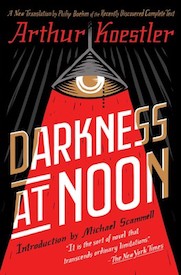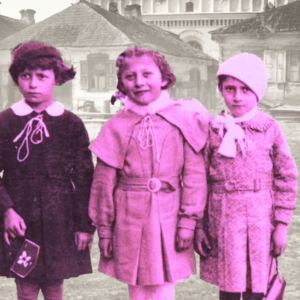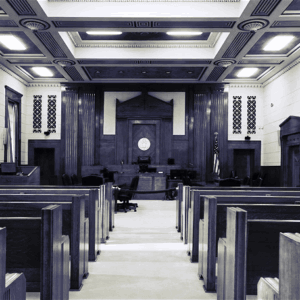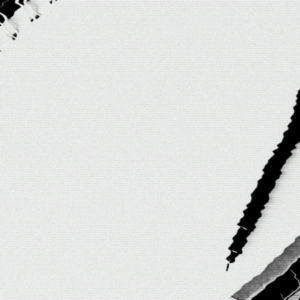
The Eerily Prescient Lessons of
Darkness at Noon
Michael Scammell on the Eternal Totalitarian Truths of Arthur Koestler's Classic
Arthur Koestler’s Darkness at Noon is an intellectual and political thriller about the life and death of a fictional revolutionary leader, Nikolai Salmanovich Rubashov, told as he languishes in prison accused of treason. After repeated interrogations by his two prosecutors—Ivanov, a veteran revolutionary and former colleague of Rubashov’s, and Gletkin, a younger, more ruthless party apparatchik—Rubashov is forced to confess to a series of crimes he has not committed. After a public trial, he is sentenced to death and summarily executed in the prison basement.
Koestler doesn’t identify the country where the story is set. There are several allusions to Nazi Germany, but the names of the characters are mostly Russian and the political system he describes is obviously the Soviet one. His inspiration for writing his book was the show trials of Soviet Communist Party leaders in the late 1930s, when the world was startled by the news that more than half the Soviet leadership had been charged with treason.
Koestler had been a loyal member of the party himself until then and on his first and only visit to the Soviet Union in 1932, had met some of the government ministers who were being imprisoned and put on trial. One whom Koestler particularly admired was Nikolai Bukharin, a popular and highly intellectual Bolshevik leader, who had been in and out of power since the October Revolution and was regarded as one of Stalin’s most formidable ideological rivals.
By the time Bukharin was imprisoned, Koestler had had a taste of political prison himself. In 1937, during the Spanish Civil War, he had been sent to Madrid as a communist agent, gathering enough material to publish a volume of strident, anti-Franco propaganda entitled L’Espagne Ensanglantée (Bloodstained Spain). He returned to Spain as a foreign correspondent for a liberal British newspaper, The News Chronicle, but was arrested during the Battle of Málaga and placed in solitary confinement in the city of Seville. He remained there for three months, seeing other prisoners led out for execution and constantly fearing he might be next.
He was released after some influential British friends intervened on his behalf and immediately wrote Dialogue with Death about his experiences. His book was highly praised by Thomas Mann, Walter Benjamin, and George Orwell, who praised it as “of the greatest psychological interest” and “probably one of the most honest and unusual documents that have been produced by the Spanish War,” among others.
Koestler also resigned from the Communist Party and delivered a passionate speech to the communist-controlled German Writers’ Association in Paris, in which he explained his reasons, quoting André Malraux: “A life is worth nothing, but nothing is worth a life,” and Thomas Mann: “In the long run, a harmful truth is better than a useful lie,” two aphorisms that directly contradicted communist ideology. Soon afterward, the third big Soviet show trial got under way. Bukharin and twenty of his Soviet government colleagues were accused of a host of fantastic crimes, among them plotting to assassinate Lenin and Stalin, carve up the Soviet empire, and restore capitalism.
Few people outside the Soviet Union believed these accusations, but after first denying the charges, Bukharin and his comrades inexplicably pleaded guilty. Bukharin’s ambiguous words seemed to concede that he was “objectively responsible” for his criminal behavior, but not for any particular crime cited in the indictment, leaving onlookers to debate the true extent of his confession.
Current dictatorships operate in essentially the same way they always have—by terrorizing their subjects and depriving them of their most important freedoms.
Koestler was electrified by these confessions. How could such a large portion of the Soviet establishment have spent months plotting against the government and Stalin without being discovered? How had powerful leaders such as Bukharin been transformed into impotent defendants and manipulated to confess to crimes they had clearly not committed? How had Stalin managed to pull off his monstrous coup de théâtre so successfully? And why had the victims played their parts so willingly and gone so obediently to their deaths?
*
Darkness at Noon was Koestler’s attempt at answering these questions and his answers were controversial. It was taken for granted, for example, that torture must have been used to extract these confessions from the Soviet leaders. Koestler by no means ruled out the use of torture in Soviet jails and there are many instances of torture in Darkness at Noon. Rubashov himself is denied sleep and has a blinding light shone in his eyes during his interrogations, but Koestler never shows Rubashov undergoing direct physical torture. He plays it down, not, as some critics have alleged, to soften the crimes of the communist authorities, but because he was more interested in something else. Rubashov represented the old guard of the Bolshevik Party, and Koestler had concluded that after thirty to forty years of suffering every kind of adversity, including various types of torture, they couldn’t be broken by torture alone.
Spain had taught Koestler that the idealistic form of communism that had inspired these men in their youth and had also attracted him to enlist in the party had all but disappeared, giving way to a harshly oppressive regime in which all power was concentrated in the hands of one man—Joseph Stalin. The result was widespread corruption and the establishment of a dictatorship that brutally crushed the people, especially the peasants and workers in whose name the revolution had been carried out.
The show trials were both a symptom of this corruption and proof of the rot that was undermining the whole system, and the most loyal party members among the accused had confessed because the ideological ground beneath their feet had been cut away and they had nothing more to believe in. It was their resulting psychological collapse that Koestler wished to explore, rather than the mechanisms of the trials themselves.
Koestler postulated that some of the government’s leaders, such as Bukharin, while conforming outwardly, had never entirely abandoned their revolutionary creed and had retained many of their original communist ideals. Cocooned in their privileged party positions, they had been slow to grasp the radical corruption undermining the country from within, and when they finally acknowledged this truth, were unable to hide their disillusionment. Their instinctive resistance in a police state made their arrests inevitable, and the combination of isolation, exhaustion, disillusionment, and psychological disintegration did more, in Koestler’s view, to bring about their demise than physical mistreatment alone would have done. In turning against the party they had lost their sole source of support and, unable to resist any further, confessed to their “crimes” as a “last service to the party.”
In response to his critics, Koestler cited a book called I Was Stalin’s Agent by General Walter Krivitsky, which had described in detail the interrogation and trial of one of Bukharin’s former colleagues, Sergei Mrachkovsky, who had said he was publicly confessing to his crimes out of a sense of duty to the party. Koestler added that he didn’t think all the defendants who confessed had avoided torture, only “a certain type of Old Bolshevik with an absolute loyalty to the party,” who would succumb without it.
To this theory Koestler attached another, equally controversial suggestion that Rubashov might have undergone a kind of spiritual conversion in prison as well. During his long hours alone Rubashov uses a prison tapping code to make contact with a White Russian prisoner in the cell adjoining his. The code itself was also grounded in reality. Koestler had learned of it from a childhood friend, Eva Zeisel, who had just been expelled to the West after serving sixteen months in a Soviet jail for allegedly plotting to assassinate Stalin. In Koestler’s novel, Rubashov’s tapping exchanges with his neighbor persuade him that the latter is a buffoon, a conventional moralist who prattles on about old-fashioned notions such as honor, decency, and conscience. As time passes, however, Rubashov begins to doubt himself. “Looking back, it seemed he had spent forty years in a mad frenzy . . . of pure reason. Perhaps it wasn’t healthy . . . to cut off the old ties, to disengage the brakes of ‘thou shalt not.’ ”
This biblical phrase seems highly uncharacteristic for the communist, Rubashov, but it dovetails with echoes of Dostoevsky’s Crime and Punishment that appear from time to time in Koestler’s book. Ivanov mentions the novel during his first interrogation of Rubashov and their arguments often resemble Porfiry Petrovich questioning Raskolnikov. While ruminating in his cell, Rubashov recalls the image of a pietà he once saw in a European art gallery while in effect sending one of his party subordinates to his death.
These Christian motifs point to themes of martyrdom and absolution, and Koestler suggests that by the time he is ready to confess, Rubashov is prompted by a deeper sense of guilt than simply disloyalty to the party. His crimes are violations of traditional morality and when he finally confesses to Gletkin, it is for reasons Gletkin cannot possibly understand. Koestler refrains from portraying Rubashov as a full-fledged Christian, however, and at his execution leaves him an agnostic. “A dull blow struck the back of his head. It was long expected but nevertheless took him by surprise. . . . A second, shattering blow hit him on the ear. Then all was still. The sea rushed on. A wave gently lifted him up. It came from afar and traveled serenely onward, a shrug of infinity.”
*
Koestler wrote his novel with astonishing speed, starting it in the South of France in the summer of 1939 and finishing it in Paris in April 1940. The last eight months coincided with the time of the Phoney War, a period of calm before the German invasion of France in May 1940, but there was no calm for Koestler. Still in the midst of writing, he was arrested by the French police as an “enemy alien” and imprisoned in Le Vernet internment camp in the South of France. He thought it was because of his German citizenship, but later learned he had been classified as a Soviet agent, this at a time when he had left the Communist Party and was writing his anti-Soviet novel.
The camp regime was lax enough for him to be able to continue writing and after four months, for lack of evidence, he was allowed to return to Paris. He was condemned to house arrest and ordered to report regularly to the nearest police station, but even so, he was subjected to unannounced police raids and the occasional confiscation of his papers. Once or twice the unfinished text of Darkness at Noon sat on his desk and a carbon copy rested on top of his
bookcase, but the French police overlooked them.
Koestler’s English girlfriend, a 21-year-old art student named Daphne Hardy, was sharing the apartment with him at the time and unbeknownst to him, had translated some short passages from the novel to while away the time while Koestler was in Le Vernet. “I had started to translate his book for my own consolation,” she later wrote.“He chanced to find it and read the first few pages while I squirmed in bed. . . . After a minute or two he turned around and said, ‘Also Schätzchen, das ist sehr gut. Wir werden ein Geschäft machen.’ ” (Well, darling, it’s very good. We’ll make some money out of this.)
When Koestler returned to Paris in late 1946, he was greeted as a hero, embraced by Sartre, de Beauvoir, Camus, and Malraux as a literary equal.
Hardy had no prior experience in translation and was nervous about her abilities, but agreed to give it a try.“After breakfast each day,” she later recalled, “we would draw the curtain, which partitioned the apartment in two. He would sit at his table in the bigger room with the bookcases, I would sit on the edge of the divan at the round table . . . imprisoned there until lunchtime . . . while he worked with concentrated fury about ten feet away.” She completed her work at top speed and mailed her translation to publisher Jonathan Cape in London, and Koestler mailed the carbon copy to a German-language publisher in neutral Switzerland.
Days later, when German troops moved to occupy Paris, Hardy and Koestler fled south to escape arrest. Koestler joined the French Foreign Legion to hide his identity while Hardy, a British citizen, made her way to London. Nothing was heard from Switzerland and she believed that to all intents and purposes, her translation was the only copy of the book to survive.
Koestler’s original title for the novel, The Vicious Circle, didn’t appeal to Cape and he asked Hardy to supply a new one. Abashed by the responsibility and fearing Koestler’s wrath if she got it wrong, she consulted a variety of literary sources and settled on Darkness at Noon, a vivid and apt metaphor that proved to be a stroke of genius. Koestler fully approved and was under the impression that the title came from a well-known line in Milton’s Samson Agonistes, “Oh dark, dark, dark, amid the blaze of noon,” an attribution that persists in some circles today, but Hardy’s inspiration was the book of Job: “They meet with darkness in the daytime, and grope in the noonday as in the night.”
*
Darkness at Noon was published by Cape in London in December 1940, just as German bombs were raining down on the city and there was serious talk of a possible German invasion. Koestler was back in jail again—in England now, having arrived illegally from Lisbon—and again as a suspected agent, this time of the Germans. It was hardly an auspicious moment to launch a political novel about show trials in the prewar Soviet Union. A world war had just broken out and Stalin’s show trials were largely forgotten. Sales of the book were slow to begin with and only a few critics, most of them on the left, understood its importance.
“Who will ever forget the first moment he read Darkness at Noon?” wrote Britain’s future Labour Party leader Michael Foot, reviewing the book. “For socialists especially, the experience was indelible.” Other reviewers deemed the novel “the most devastating exposure of Stalinist methods ever written,” “one of the few books written in this epoch which will survive it,” and “a bitter pill to swallow.” George Orwell thought the book “brilliant as a novel” and accepted its explanation of the show trials, but was even more impressed by the accuracy of its analysis of communism. Four years later, when writing Animal Farm—inspired in part by Koestler’s ideas—Orwell went further and pronounced Darkness at Noon a masterpiece.
The English public, distracted by the war, was slow to be convinced. In the United States, not yet at war, sales were better, helped by a glowing review in Time by Whittaker Chambers, the former Soviet spy, who knew what Koestler was talking about. Its selection by the Book of the Month Club also boosted sales, but they were still modest compared with what happened after the war, when sales of the English-language edition exploded. A French translation came out and sold 100,000 copies in its first year. Lines of people formed outside the French publisher’s office in Paris waiting for the book to come off the presses and copies were changing hands at eight times their original price. By the middle of the following year it had sold 300,000 copies and went on to sell two million in two years, then a record in French publishing.
This phenomenal success was due in large part to the turbulent political scene in Europe during and after World War II. When Koestler’s novel first appeared, Stalin had just signed a non-aggression pact with Nazi Germany and was regarded as an enemy by the Allies, but after Germany invaded the Soviet Union, Stalin switched sides and his armies were instrumental in helping to secure the Allied victory. The Soviet Union’s stock soared and communists in Western Europe suddenly found themselves seriously competing for power. In France, they were the largest party in the Constituent Assembly and were expected to win the first postwar general election with ease.
In this context, the anti-Soviet message of Darkness at Noon erupted with shattering force. There were rumors of a communist delegation visiting the French publisher to demand he cease publication, and of party members being dispatched to bookstores to buy up all available copies. When a constitutional referendum was held in May 1946, the Communist Party narrowly lost by 48 to 52 percent, and experts agreed with the future Nobel Prize winner François Mauriac that the tipping point was the publication of Darkness at Noon.
When Koestler returned to Paris in late 1946, he was greeted as a hero, embraced by Sartre, de Beauvoir, Camus, and Malraux as a literary equal. In the United States, which Koestler visited for the first time two years later, he was regarded as the most potent anti-communist writer of his time. Arriving in New York for a US lecture tour on the British luxury liner the Queen Mary, with Clark Gable, Dizzy Gillespie, and Admiral Richard E. Byrd as fellow passengers, Koestler was hailed as “Celebrity of the Day” in that day’s Celebrity Bulletin.
*
Within a few years Darkness at Noon had been translated into more than 30 languages and become a worldwide bestseller. For decades it was widely read in American high schools and assigned in undergraduate political science courses, and the accepted English version has always remained in print, despite a falloff in readers since the collapse of Soviet communism. This raises the question of why make a new translation almost 80 years after the novel was written and why publish it now?
One reason is circumstantial. When Koestler and Hardy fled Paris to escape the Germans, they lost their copy of the original German typescript and the carbon copy had apparently disappeared into thin air, leaving Hardy’s translation as the only text in existence. Her English version had introduced Darkness at Noon to the English-speaking public all over the world and had become the urtext from which all other translations were made, a rare occurrence in modern literature.
This situation changed some four years ago, in 2015, when Matthias Wessel, a German graduate student working on Koestler’s German writings, stumbled across the carbon copy of Darkness at Noon that had seemed to disappear in 1940. He found it in the archive of Emil Oprecht, founder of the Europa publishing house in Zurich, but it wasn’t labeled as such. The name on the title page was simply Rubaschow (the German spelling of “Rubashov”) and the author’s name was given as A. Koestler. Every page, including the title page, had been stamped by the French censor’s office, confirming that it had come from Paris in wartime, but the title had still meant nothing to Swiss editors at the time. Koestler was little known and it was only when Wessel, well versed in Koestler’s work, came across it that it was recognized as the only copy of the original German text in existence.
The unearthing of the manuscript led to a reconsideration of Koestler’s prose in German and a reexamination of Hardy’s key translation into English. Despite her youth and lack of experience, her version has been properly acknowledged as idiomatic and fluent, serving the novel well for over seven decades, but it also reveals signs of the difficulties she had encountered. She had been forced by circumstances to work in haste, with no dictionaries or other resources available for consultation, which exposed her understandable lack of familiarity with the Soviet and Nazi machinery of totalitarianism.
Obliged to improvise, she occasionally employed terminology—such as “hearing” for “interrogation”—that made these regimes look somewhat softer and more civilized than they really were. The text she worked on was not quite final either, for the Zurich typescript reveals changes Koestler made at the last minute and passages not found in the Hardy translation (such as a paragraph on masturbation in prison), items that Hardy couldn’t possibly have known about or foreseen.
It seemed that a fresh and up-to-date translation of the novel would be helpful, preferably by a seasoned translator with the knowledge and experience to clarify the jargon of Marxism-Leninism and present it in terminology that is both accurate and makes sense to an English-speaking reader. Philip Boehm, a noted translator of over thirty books and plays from German and Polish, who lived for several years behind the Iron Curtain, has proved the ideal choice for the job. In Boehm’s translation, Koestler’s novel is a crisper read than before. The prose is tighter, the dialogue clearer, the tone more ironic, and the intricacies of Marxist-Leninist dialectics more digestible. Boehm captures nuances of status and hierarchy in the relationships between party members and their leaders that weren’t always evident before, along with aspects of the regime’s calculated cruelty that have only been understood in recent years. The effect for the reader is of chancing upon a familiar painting that has had layers of varnish and dust removed to reveal images and colors in a much brighter light.
*
Twenty years ago, the editors of the Modern Library in New York ranked Darkness at Noon at number eight on its list of the hundred best English-language novels of the twentieth century. Setting aside the irony of a translated novel appearing on a list of English-language books, the choice was farsighted, a tribute to the novel’s high quality and to its success in transcending its historical moment.
The historical dimension is important, of course. Though Koestler refused to name the country where his story takes place, it most closely resembles the Soviet Union and Number One is clearly based on Stalin. The novel was highly topical from the moment it first appeared, and it remained so for a long time, thanks in part to its adoption as a weapon in the Cold War. Today, we have only to look at authoritarian regimes in China, North Korea, and scattered across the globe to be reminded that its basic message is still relevant, and that current dictatorships operate in essentially the same way they always have—by terrorizing their subjects and depriving them of their most important freedoms.
It’s important to remember that Koestler was also writing fiction, however, and as the times have changed, contemporary details have fallen away and the novel’s allegorical dimension has moved to the fore. Darkness at Noon is also a dystopia in the mold of Orwell’s Nineteen Eighty-Four, and Rubashov is an archetypal political prisoner, a flawed everyman in search of salvation. Darkness at Noon’s message remains topical but also timeless, a warning to readers that is not to be ignored.
____________________________________

Excerpted from Darkness at Noon, edited by Michael Scammell and translated by Philip Boehm. Copyright © 2019 by Michael Scammell. Available from Scribner.
Michael Scammell
Michael Scammell is the author of Koestler: The Literary and Political Odyssey of a Twentieth Century Skeptic and Solzhenitsyn, A Biography. He has translated books by Tolstoy, Dostoevsky, and Nabokov into English and writes regularly about Russian and East European literature.












